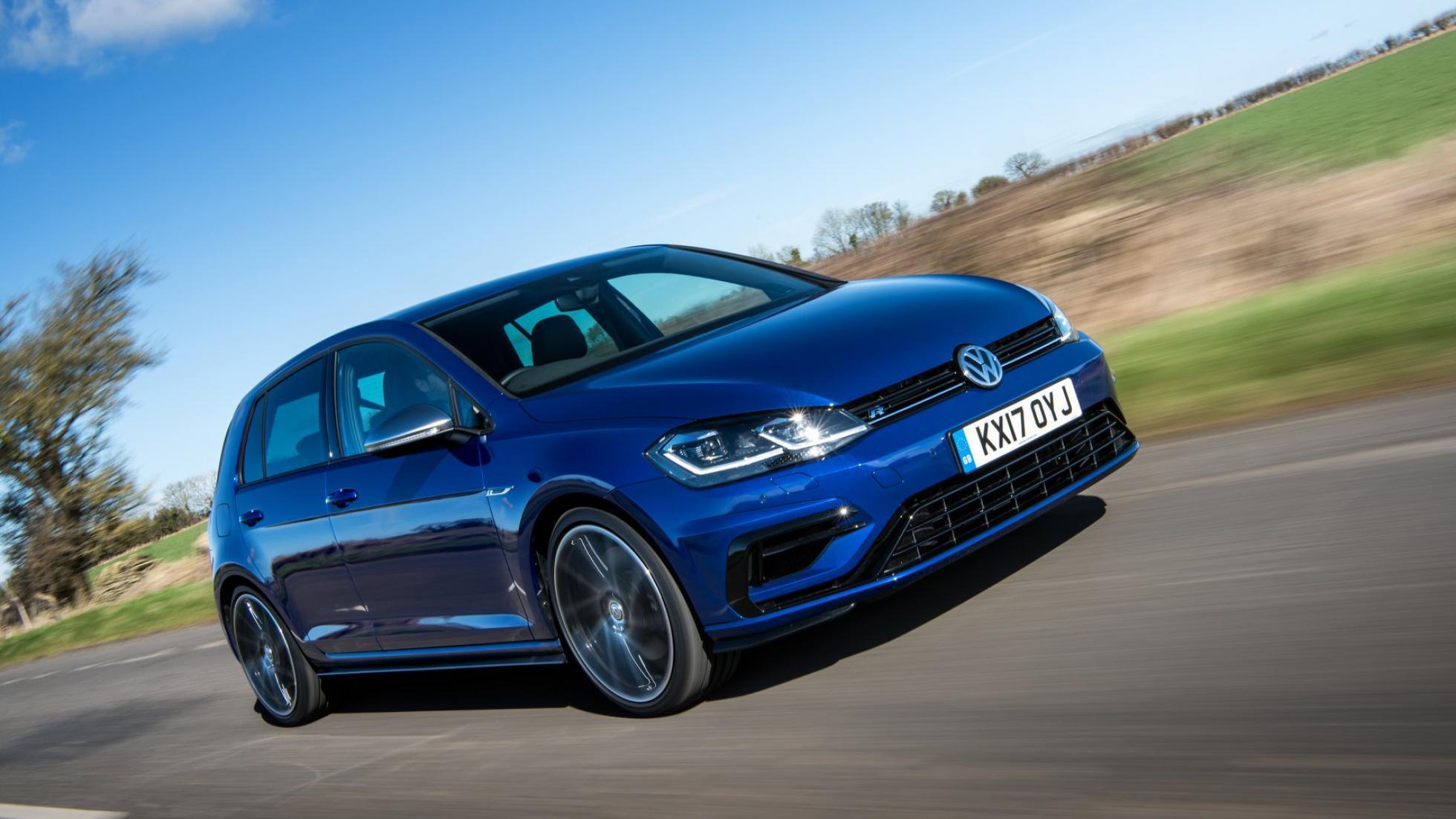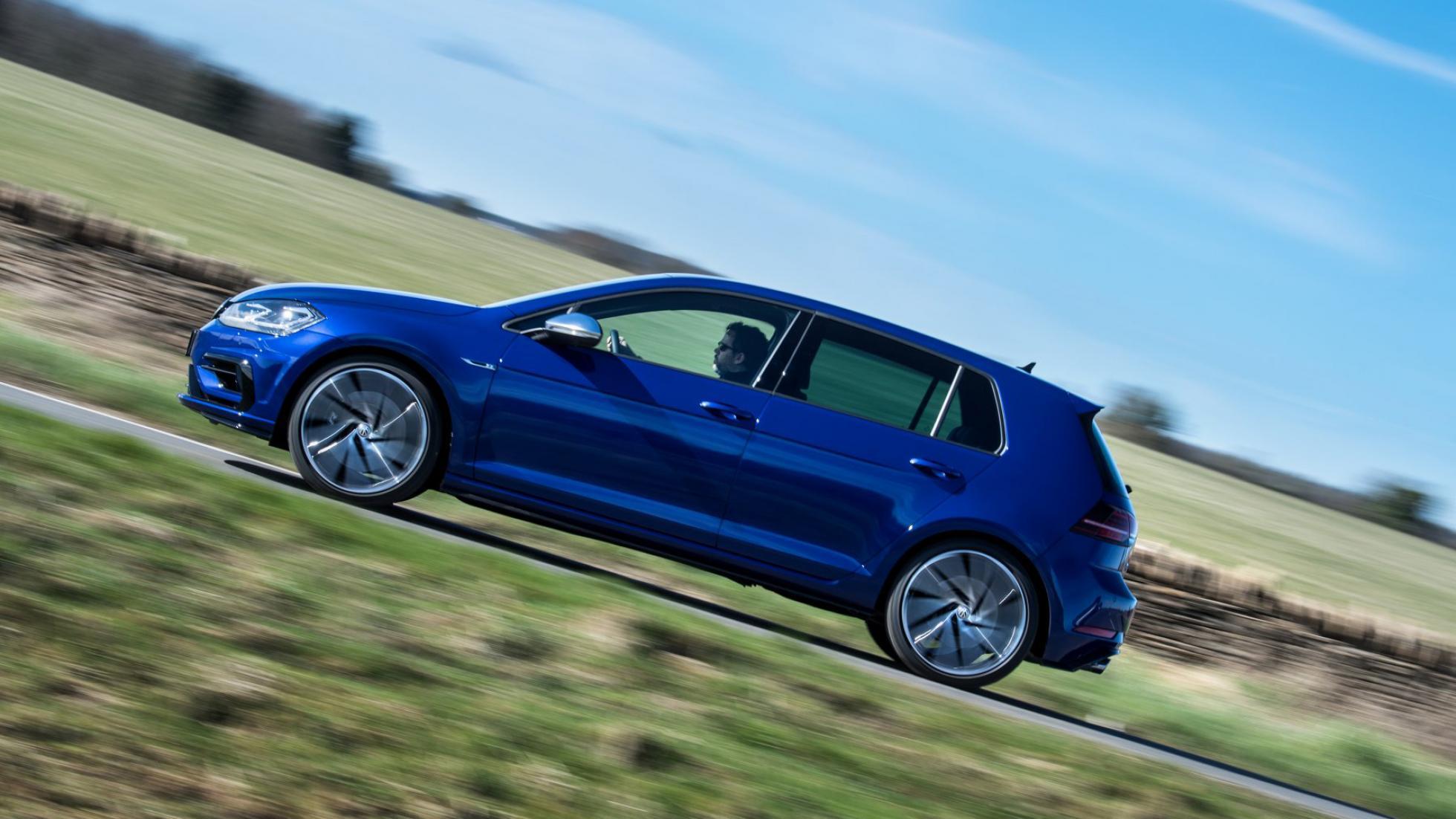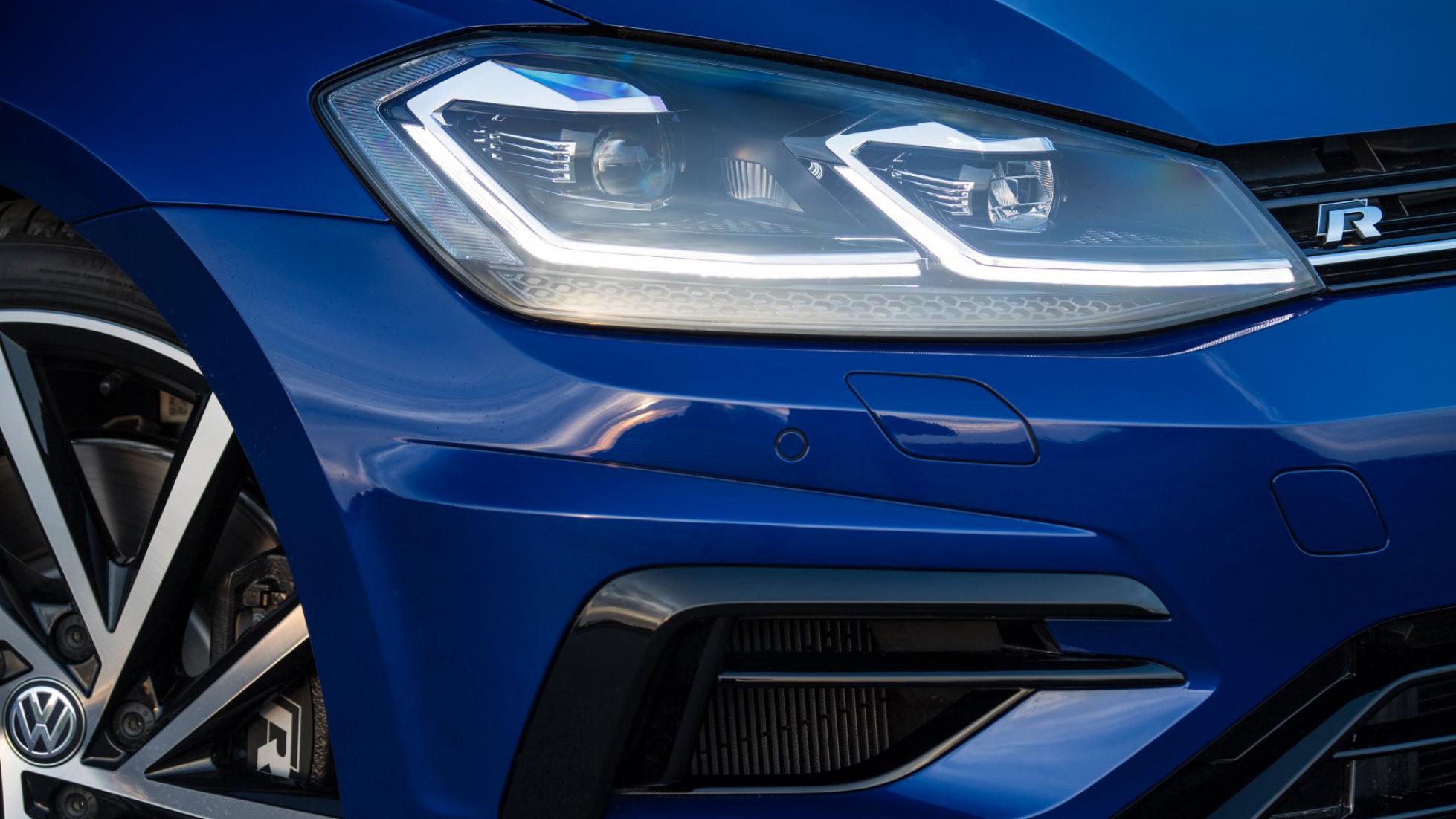Top Gear's Volkswagen Golf R review

OVERVIEW - What is it?
Until the VW Golf Mk8 gets over 300bhp and four-wheel drive, it’s quite simply the fastest VW Golf. And more. See, the smart thinking driver always knew that though the R-badged Golfs had more power, more driveshafts and cost more money than the tartan-seated GTI, it was the slower car that was lighter, sweeter to drive, and better value. All that changed with the Golf Mk7 R. For the first time, R trumped GTI.

The formula changed little from the previous Golf R: a 2.0-litre four-cylinder turbo engine up front, four-wheel drive, and a choice of manual or dual-clutch automatic gearboxes. The look was pretty much the same too: a classy Golf, with some big wheels, stretched intakes and four exhausts this time, instead of two. Seems like overkill.
However, we can forgive the Golf R its over-piped bottom, because it’s brilliant. Somehow, VW turned out a car that wasn’t just faster, more sonorous and agile than the GTI, but managed to be palpably better than its cousin, the Audi S3. For some time, this was Top Gear’s very favourite hot hatch. Our 2014 hot hatch of the year award-winner, no less.
During its life VW added power (then, curiously, took it away again), offered a Performance Pack with bigger brakes and a naughty exhaust, and sold the Golf R as a three-door hatchback, a five-door hatch, or as a wagon, albeit with the seven-speed paddleshift gearbox as the only transmission.
Thanks to low finance rates making it affordable at around £300 a month, it was a massive hit in the UK, and deservedly so.

DRIVING - What is it like on the road?
The Golf R is a very easy car to drive quickly, and this might lead lazy people with dimly-lit imaginations to tell you its boring. But it isn’t. As our friend Shrek tells us, like an onion, it’s layered. If you just want to get from A to B very rapidly indeed, then it’s got traction, pace, grip, very little turbo lag and as a result your license may be at risk if you do not exercise restraint when accelerating.

VW claimed 0-100kph in 5.2sec for the manual and 4.9sec for the DSG, but we timed a 296bhp DSG example from 0-100kph in 4.5 seconds. It’s got all the straight-line performance you could need, and a great soundtrack too, thanks not to speaker fakery (take note, BMW), but a Ford-style boombox ‘sound-symposer’ reverberating the engine’s natural bellow through the firewall and into the cabin. Happily, in Comfort or Eco mode the car shuts up and behaves, like a Golf ought to – and in a way a Civic Type R or RS Megane never manage to.
As standard, you got lower, firmer suspension than a normal Golf, but keep an eye out for Rs specced with DCC – Dynamic Chassis Control. This was a £1,500 option that plenty of the finance-package buyers won’t have had, but if you can source a DCC-equipped example, it adds even more bandwidth to the car’s superpowers. In Comfort mode, it’s freakishly languid and soft – more so than a normal Golf.
Normal mode is an ace compromise for everyday driving, and Sport mode tightens the suspension up without making it crashy. It doesn’t have the damping dexterity of the class benchmark – the newer Honda Civic Type R – but as an everyday hack that’ll also pummel a B-road, the Golf R is still very special. The Individual driving mode lets you set your preferences too – pity switching between modes via the touchscreen is a bit of a fiddle.
The four-wheel drive system is what’s known as a Haldex. We’ll spare you the technical PowerPoint and just say that most of the time, most of the power goes to the front wheels. When the computer senses the front wheels slipping, or that you’re hard on the throttle, more of the 300bhp is entrusted to the back wheels. What’s great is that the car doesn’t just feel like a locked-down, one-dimensional device, like so many other fast four-wheel drivers. There’s reward for driving a Golf R with technique: get it steady-state in the corner, lift just a tad to put the weight on the rear then plant the throttle and exit the corner with the back tyres just overspeeding, weight squatted down, chassis steering the car. It’s subtle, but can be addictive. It’s a playful Golf, but also very secure and stable. A car you can exploit, but also get 9/10ths from on the road without being antisocial.
Brakes are fine, but nothing special, and if you’re going to track your Golf R they’ll need upgrading to cope with repeated slowing of its portly 1,600kg kerbweight.

ON THE INSIDE - Layout, finish and space
Well, it’s a Golf. Logically laid out, well made, not massively exciting. The Golf R’s bespoke touches extend to a flat-bottomed R-badged steering wheel, a 4Motion badge on the centre console lid, some bolstered seats (which are comfy but not as supportive as true sports buckets seats) and blue-tinted dials. It’s not all red seatbelts and chequered-flag graphics, like some hot hatches, and that’s… fine. It suits the R’s subtle demeanour.
In the back, it’s just as roomy as a normal Golf and the boot, well, it’s from a Golf. You get a little bit less underfloor stowage on account of the all-wheel drive system, but it’s still a very practical box.
On post-2017 facelift models, there are a few pitfalls to be aware of. New trim, virtual cockpit TFT dials (all the performance Golfs got these as standard), and an uprated high-res navigation system with online connection via your phone for CarPlay and traffic apps. You uprate that screen to a 9-incher with gesture control for £1,300, but you really mustn’t because then you lose the volume and zoom knobs, and it becomes a frightful pain to use. Yes you can use the volume controls on the steering wheel, but that has so many other buttons that you’ll keep altering the cruise speed or something.
OWNING - Running costs and reliability
The Golf R will be pretty painless to live with. How can we be so unequivocal with our praise? Simple: Top Gear ran a Golf R DSG five-door on our long-term test car fleet for eight months and 14,000 miles. It was unimpeachably tough, reliable and easy-going. Aside from one coolant warning sensor meltdown on an unusually hot day – swiftly rectified by some very impressive VW dealer service - the Golf R was a rock. Oil use, tyre wear and trim quality all held up to some very unforgiving miles. It averaged 25mpg (11.3 litres/100km) in town and 34mpg (8.3 litres/100km) on the motorway.

There are a few spec variations to be aware of. In 2017, the Golf R was facelifted, gaining standard LED front lights and a power bump from 296bhp to 306bhp. You won’t notice it. Just as well really, because in 2019 emissions regulations forced VW to detune the car by 10bhp.
The Performance Pack was a rare option, adding a rorty Akrapovic exhaust system and bigger brakes that still aren’t quite as bitey as we’d have liked. It was only available on the DSG model, which was the most popular model, outselling the manual by a margin of around 52 to 48 per cent. Upgrading from 18-inch to 19-inch rims was a popular option, as was leather upholstery. The winter pack (a £300 extra) is a good find, adding heated seats and heated washer jets.

VERDICT
The Golf Mk7 R is not the sharpest hot hatch you can buy – that’s the Civic Type R. It’s not a track-friendly car, nor as outrageous as an A45 or RS3. What it is, in fact, is the most rounded hot hatch ever made. We used to say that about the Golf GTI – and that’s still brilliant by the way – but the R sounds better. Goes harder, has superior all-weather performance and doesn’t cost much more to buy or run. You can’t say fairer than that.
The 4x4-drive super-Golf finally came of age with this phenomenally rounded hot hatch
VERDICT
| FOR | AGAINST |
| Pace, noise, classless image, all the practicality of a Golf | Doesn’t have the racey finesse of, say, a Civic Type R. Beware, thieves love ‘em too… |
| SCORE | 8/10 |













